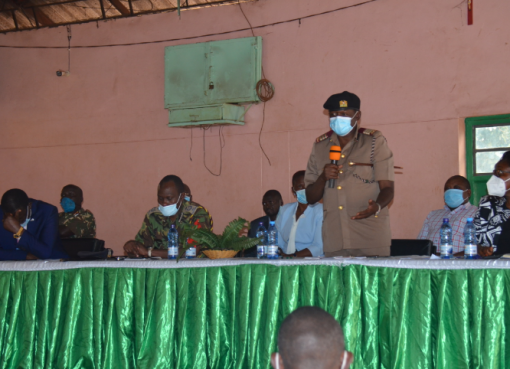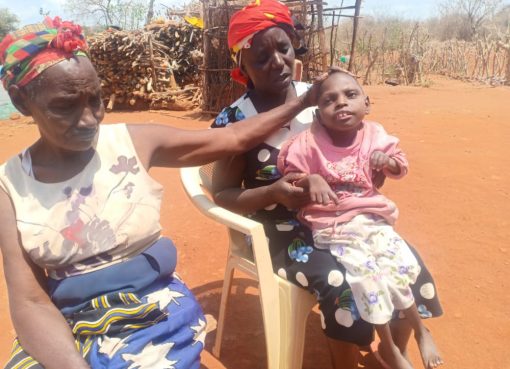Over 80 participants from 36 African countries and South Korea are meeting in Kenya to review the progress and chart the way forward for the Korea-Africa Food & Agriculture Cooperation Initiative (KAFACI).
One of the meeting’s activities will be the signing of Memorandum of Understanding (MOUs) with 14 new member countries.
KAFACI has been facilitating the transfer of agricultural technologies and fostering strategic partnerships for development.
Speaking today when he officially opened the 6th Korea-Africa Food and Agriculture Cooperation Initiative (KAFACI) General Assembly, Agriculture and Livestock Developoment Cabinet Secretary Dr. Andrew Karanja said Kenya plans to reduce rice imports by 50 per cent in the next five years, focusing on embracing high yielding varieties and modern farming technology.

He confirmed that every year, the Government is spending more funds to import rice to feed the population as production remained low.
“Every year, close to 800,000 metric tonnes is imported into the country with our production standing at between 150,000 and 200,000 metric tonnes. This has continued to strain the Government as every year substantial resources have to be committed to bridge the gap,” said Dr. Karanja
The CS explained that the Government is fast tracking a food diversity approach to assist Kenyans embrace more varieties of food.
He noted that demand for rice was increasing following population surge and the rapid urbanisation the country is experiencing and the country has been working in the areas of research and capacity-building for the scientists, towards of increased production.
“We have rice as one of our prime value chains and Korea has a lot of technologies in terms of rice and therefore development of rice varieties that our farmers can adopt is key,” he said
Director General Rural Development Administration (RDA) Hwang Yong Kim said that over the years, KAFACI has developed 26 high-yield and high-quality rice varieties adaptable to various African environments.
KAFACI, he added, has pursued a diverse approach to boost agricultural productivity in Africa, including developing a comprehensive database cataloguing the characteristics of various indigenous cattle breeds and publishing an extensive research and analysis report on the status of agricultural mechanisation across the continent.
“In the next five years, we will focus on research related to sustainability and resilience of African agriculture and we believe that the development of agricultural science and technology will surely help to promote African economy as well and as a way to accomplish this, focus is mainly on the research in the agricultural scientific area,” he said
Dr. Kim explained that since its inception with 16 African member countries in 2010, KAFACI has expanded to 23 member countries by 2022, and today welcomed 14 more countries into the partnership signifying the evolvement into a strong agricultural research and development partnership encompassing more than two-thirds of the African continent.
He noted that today, they would approve collaborative research and development projects for the next five years and share the necessary knowledge and information for their implementation.
“We have also arranged a meaningful moment to share the seeds of new rice varieties with the newly joined member countries, continuing the achievements of the past,” he added.
Dr. Kim termed Kenya as a country that has been leading in climate change response efforts in Africa, and therefore holding this General Assembly here carries symbolic significance.
Kenya Agricultural and Livestock Research Organisation (KALRO) Director General Dr. Eliud Kireger said the focus of collaboration with KAFACI is in agricultural mechanisation, especially rice.
“Our government will benefit from Sh6.4 billion (USD50million) programme which is being rolled out in the 37 countries in Africa for the next five years. Out of the total extended resources, Kenya will benefit with Sh30 million for distribution of the new rice varieties,” said Dr. Kireger.
He added that most of the rice products that Kenya produces were also produced elsewhere in similar environments across Africa and therefore the initiative aims at germplasm exchange varieties of rice and other products that have done well elsewhere.
“We expect to increase our productivity at least in the next five years so that we can cut what we are importing by about 50 percent and that is the target,” Dr. Kireger said adding that the biggest challenge that farmers in Mwea and even Ahero faced was lack of mechanisation.
The DG however said the Korea has developed new technologies in mechanisation of rice production and Kenya is thus tapping into that innovation and knowledge to improve mechanisation of rice farms, which was expected to result in increased production.
“Our consumption currently stands at about 1,000,000 metric tonnes, but we are producing only about 200,000. We need to be able to at least produce around 70 percent,” Kireger said.
Rice is one of the key strategic crops for food security and a source of income for rice value chain actors. The current demand for rice per individual per year stands at 20. 6 Kilogrammes. In 2020, the country produced 180,000 metric tonnes of rice but KALRO projects that it will increase by 10 percent to 520,000 MT by 2030.
By Wangari Ndirangu





